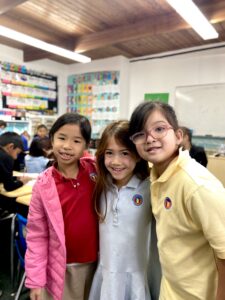Language Magazine – Mikyung Kim Wolf, Lorraine Sova, and Alexis A. López
 Today’s K–12 classrooms are brimming with the use of technology. Students use computers and websites to access digital materials, work on projects and produce presentation materials, and take assessments, to cite a few examples. Alongside this widespread technological adoption, the growing linguistic and cultural diversity in classrooms has broadened the essential literacy skills required for students. Literacy skills extend beyond reading and writing printed texts and increasingly involve navigating varied communication styles in diverse contexts.
Today’s K–12 classrooms are brimming with the use of technology. Students use computers and websites to access digital materials, work on projects and produce presentation materials, and take assessments, to cite a few examples. Alongside this widespread technological adoption, the growing linguistic and cultural diversity in classrooms has broadened the essential literacy skills required for students. Literacy skills extend beyond reading and writing printed texts and increasingly involve navigating varied communication styles in diverse contexts.
